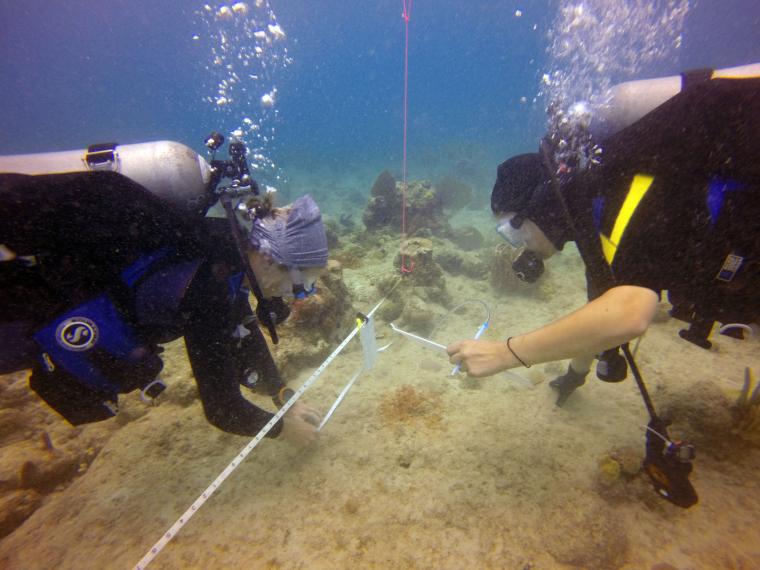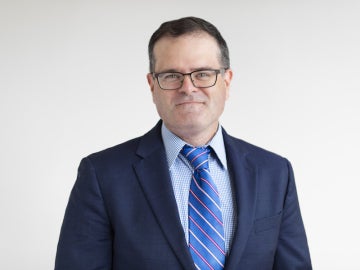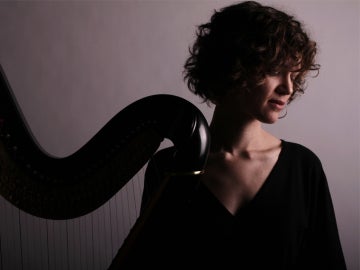Cultivating Women in STEM
August 6, 2014
Communications Staff

Senior Rachel Zuckerman, right, and Elizabeth Whitcher ’12 take measurements of coral cover in the U.S. Virgin Islands in July 2014. The work is part of a project led by Dennis Hubbard, professor of geology, to re-examine one of the reefs he studied in the 1970s and early ’80s.
Photo credit: Dennis Hubbard
A grant from Alcoa Foundation is supporting the scientific research by six Oberlin faculty members and student assistants this summer. The $25,000 grant is supporting faculty-student collaborations in chemistry, computer science, geology, and neuroscience.
More than 100 students conduct research with faculty in Oberlin’s Summer Research Institute from June to August. Funding from Alcoa Foundation is expanding those opportunities for seven outstanding women pursuing STEM majors, one of whom spent a portion of the summer working in the field in the U.S. Virgin Islands.
Oberlin maintains a strong connection with Alcoa Inc. The company was launched in 1888 with technology developed by Alcoa’s cofounder, Oberlin graduate Charles Martin Hall. Two years earlier, with the help of Oberlin chemistry professor Frank Jewett, Hall unlocked a commercially viable process for extracting aluminum metal from ore. The revolution started with a close mentoring relationship between student and professor—the type of collaboration that is the hallmark of an Oberlin education in the 21st century.
The student assistants and their faculty mentors are spending eight to 10 weeks on their projects this summer, working full time.
Cynthia Taylor, assistant professor of computer science, with Krista LaFentres
LaFentres, who is from Jackson, Missouri, graduated in May 2014 with a computer science major. She is working together with Assistant Professor Cynthia Taylor on a project investigating the uses and misuses of disposable email services.
Disposable email addresses allow users to sign up for services that require a valid email address that does not link the identity of the recipient to the email address. A number of websites offer this service by accepting email for any address that ends with the site’s domain name. Once a message is received, it’s publicly visible on the web site -- meaning any Internet user can see every email sent to these websites.
LaFentres will play a vital role in analyzing a corpus of emails sent through these sites using a combination of automated and manual techniques. Their research goal is to determine the ways in which they are used and their potential security ramifications.
LaFentres says she plans to relocate to Kansas City, Missouri, and hopes to find a computer-science related position while she applies to graduate school. Her research interests are robotics, embedded systems, HCI, and computer vision.
Rob Thompson, professor of chemistry, with senior Carmen Azevedo
Azevedo, a senior biochemistry major from Durham, California, is working on all aspects of Professor Rob Thompson’s forensic chemistry experiments. As one of two research assistants in his lab, she is responsible for preparing samples, conducting experiments, analyzing data, and contributing to a laboratory manual that Thompson is producing.
Thompson, who has a background in analytical chemistry and research for the FBI, has been developing forensic chemistry experiments that can be used to teach instrumental analysis. This summer, Azevedo is helping to put the finishing touches on three experiments involving forensic evidence. The laboratory manual is intended for chemical analysis faculty to use in their courses and curricula.
Azevedo says she plans to continue a career in research.
Dennis Hubbard, professor of geology, with senior Rachel Zuckerman
Zuckerman, a geology major with a concentration in chemistry and paleomineralogy, is assisting Dennis Hubbard with field surveys in the U.S. Virgin Islands and will use the data for her senior honors project in the fall.
Hubbard studies coral reef structures and destructive processes. He is beginning a new project to re-examine one of the reefs in the U.S. Virgin Islands that he studied in the 1970s and early 1980s. The work is part of a larger program that ties into global assessments of coral reef processes.
The primary component of their summer research entails measuring coral cover. Zuckerman, who is from Timonium, Maryland, took Hubbard’s course, Coral Reefs: Biology, Geology, and Politics, in her first year at Oberlin and has worked in his lab for a year and a half. For the remainder of the summer, she will focus on entering the field data into a database.
After Oberlin, Zuckerman says she plans to continue research on field projects in extreme environments, ocean geochemical systems, and soil science, and her goal is to receive a PhD in paleomineralogy.
Karla Parsons Hubbard, professor of geology, with senior Erica Morelli
Morelli is a geology major from San Rafael, California. This summer, she is examining rock and sediment samples and collecting preliminary data that will contribute to a forthcoming proposal to the National Science Foundation from Professor Karla Parsons Hubbard.
Parsons Hubbard is a paleontologist who has been studying how fossils and fossiliferous rock forms, and is a member of a large research group studying the fossilization of organism remains in marine shelf and slope sites in the Gulf of Mexico. She is beginning a new research project examining the habitat of coral reefs that thrive in the cold, dark waters of the deep ocean. The idea for the project stems from the 2010 BP oil spill in the Gulf of Mexico, where many deep coral communities were threatened by the spill, as well as the dispersants that were used to keep the oil from rising to the surface.
Over the course of the summer, Morelli will apply acquired skills in petrography, scanning electron microscopy, and use of the x-ray diffractometer. She will also be responsible for taking detailed notes from submersible video of the seep sites from which the samples were collected.
Morelli says she aspires to be a researcher, either with the U.S. Geological Survey or with an academic institution.
Gunnar Kwakye, assistant professor of neuroscience, with Maya Jackson and Anne Chege
Assistant Professor Gunnar Kwakye is investigating the cellular link between Huntington’s Disease (HD), an inherited disorder that causes the breakdown of nerve cells in the brain, and the prolonged exposure to environmental agents including commonly used pesticides, solvents, and heavy metals.
Anne Chege, a rising junior biochemistry major from Gilbert, Arizona, and Maya Jackson, a rising senior neuroscience major from Chicago, are among Kwakye’s four summer research assistants. Emerging scientific evidence shows that age of onset, symptoms, and disease progression observed in neurodegenerative disorders such as HD and Parkinson’s Disease are increasingly influenced by environmental agents. One such agent is the pesticide chlorpyrifos (CPF), which is widely used for pest control on farms and public spaces. His lab has been studying the effects of CPF on antioxidant levels, cell death mechanisms, and alternative approaches of neuroprotection in HD nerve cells.
This summer, Jackson is working on various assays to better understand the cooperative mechanisms of CPF and HD mutation in exacerbating cell death pathways in HD compared to healthy nerve cells. In addition, Chege is exposing HD cells to different concentrations of the organic solvent Trichloroethylene (TCE)—a degreasing agent used in manufacturing—to understand the effects of TCE and other organic solvents in HD neuropathology.
Chege says she plans to enter the field of bioethics after Oberlin. Jackson is interested in pursuing a career in medicine as well as a PhD.
Leslie Kwakye, assistant professor of neuroscience, with Susan Russ and Cassandra Dean
Multisensory integration (MSI) – how information from the different sensory modalities, such as sight, sound, touch, smell, self-motion and taste, are integrated by the nervous system – is the focus of the research in Assistant Professor Leslie Kwakye’s lab. Her past research has involved MSI in children with autism spectrum disorders.
The aim of her current project is to establish the accuracy of a novel method for assessing the brain’s ability to functionally combine, or separate, temporally precise information from the visual and auditory sensory systems. Another goal is to investigate the link between specific autism risk genes and temporal multi-sensory functioning in the brain.
Susan Russ ’14 and Cassandra Dean, a rising sophomore majoring in biology and neuroscience on a pre-med track, are assisting with an experiment using electroencephalograms (EEGs), which are electrical signals that are derived from brain activity and can be measured on the scalp, as well as taking genetic samples from cheek cells to determine the specific genetic variation of known autism risk genes. They will be responsible for coding the computer program for the experiment, testing adult participants, and analyzing and presenting data collected from the EEG and genetic components of the project.
You may also like…
Josh Nolan Named Vice President, General Counsel, and Secretary at Oberlin
Distinguished attorney brings extensive experience in higher education law.
Learning by Teaching: Oberlin Students Share Global Music with Young Learners
College and Conservatory students in PACE 103 prepare local children for an immersive community concert at Oberlin.
Nuiko Wadden ’02 Joins Oberlin Conservatory Faculty as Assistant Professor of Harp
The versatile musician brings extensive opera, orchestral, and contemporary music experience to her role


